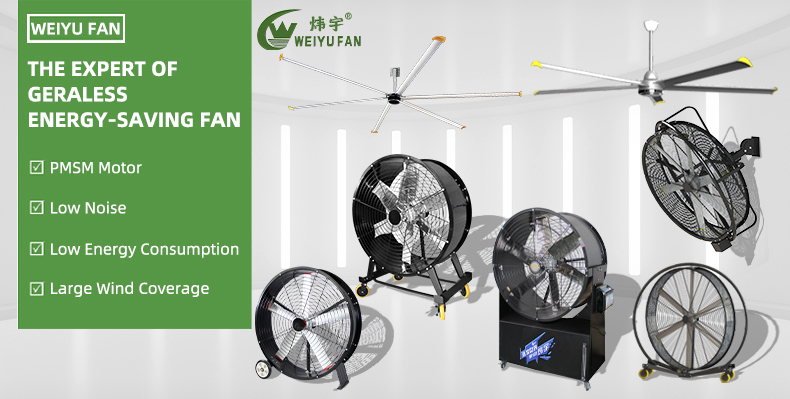Undoubtedly, determining the requirements of the system at hand is essential when in the market for an industrial fan. As far as industrial fans are concerned, there are many types such as ventilation fans, and cooling fans, each function has its specific fan that is made for it. New fans are costly, thus, understanding the key features when selecting an industrial fan is important which this article will seek to address thereby enhancing decision making in the operational level.
Recognizing the different industrial fan types
Industrial fans have axial, centrifugal, or mixed fans as some of the common different types of fans with each performing a specific function. An axial fan is often used where medium pressure and medium volume are required and can be applied for general Ventilation use. Generally, centrifugal fans are considered for high pressure and contain dust, greasy air. Some benefits of installation of mixed-flow fans depend on their characteristics, which include axial and centrifugal and which allows for use in all manner of environments. The last step in the selection process is determining what kind of fan will best suit your needs.
Key Performance Indices
The concept of industrial fan performance is analyzed through airflow (CFM), static pressure, and efficiency rating. The amount of air the fan moves is referred to as airflow whereas the limitation overcome by the fan is known as static pressure. The efficiency rating, often expressed as a percentage, just shows what part of the electrical energy supplied to the fan goes into airflow. It is imperative for a user to choose a fan with a desirable combination of these parameters so as to minimize the cost of operation.
Material and Longevity Factors
Industrial fans are manufactured from a variety of materials that will impact their life span and the efficiency with which they operate. So, in practice fans can include steel, aluminum or even plastic. Steel fans will be strong and appropriate for rough working conditions, while aluminum fans are light weight and will not corrode which is great for humid conditions. Much cheaper plastic fans are typically only used in non-critical environments. The operational environment of the fan assists in their material selection for construction.
Noise Pollution and the Relevant Guidelines
When choosing an industrial fan, noise is yet another factor that one should not ignore. Like other machines, fan noise is measured with sound power level ratings (in decibels), and most industries have limitations on the levels they can work with, and going beyond these levels can lead to legal issues. It is very important to get a fan that achieves the benchmark for that specific facility or exceeds it. Also, what about the position of the fan and the chances of noise moving in excess without any dampening accessories, which is a possibility?
Emerging Trends in the Industrial Fan Market that are Here to Stay
With the advancement of technology, the industrial fan market is not left behind as it is experiencing some trends that are targeting the improvement of performance and efficiency. Using smart technology makes it possible to monitor and control operations on the fans in real-time, which helps in energy conservation and improves maintenance cycles. More, manufacturers are making it their priority to use less detrimental designs that would impact the environment in a negative manner. Following these general trends, businesses will know how to fulfill their current demands without failing to consider the advancement of the industrial fan in the coming years.
To summarize, correctly selecting an industrial fan type requires a good knowledge not only of the existing configurations but also performance and design considerations, permissible noise emissions, and the current developments in the industry. Consideration of these aspects guarantees that the fan you purchase or choose will be appropriate for your intended purpose thereby ensuring increased opera-tional performance and productivity in your facility.
 EN
EN
 AR
AR
 BG
BG
 HR
HR
 CS
CS
 NL
NL
 FI
FI
 FR
FR
 DE
DE
 EL
EL
 IT
IT
 KO
KO
 NO
NO
 PL
PL
 PT
PT
 RO
RO
 RU
RU
 ES
ES
 SV
SV
 ID
ID
 LT
LT
 SR
SR
 UK
UK
 VI
VI
 HU
HU
 TH
TH
 TR
TR
 FA
FA
 MS
MS
 HY
HY
 AZ
AZ
 KA
KA
 BN
BN
 LO
LO
 LA
LA
 NE
NE
 MY
MY
 KK
KK
 KY
KY


 ONLINE
ONLINE